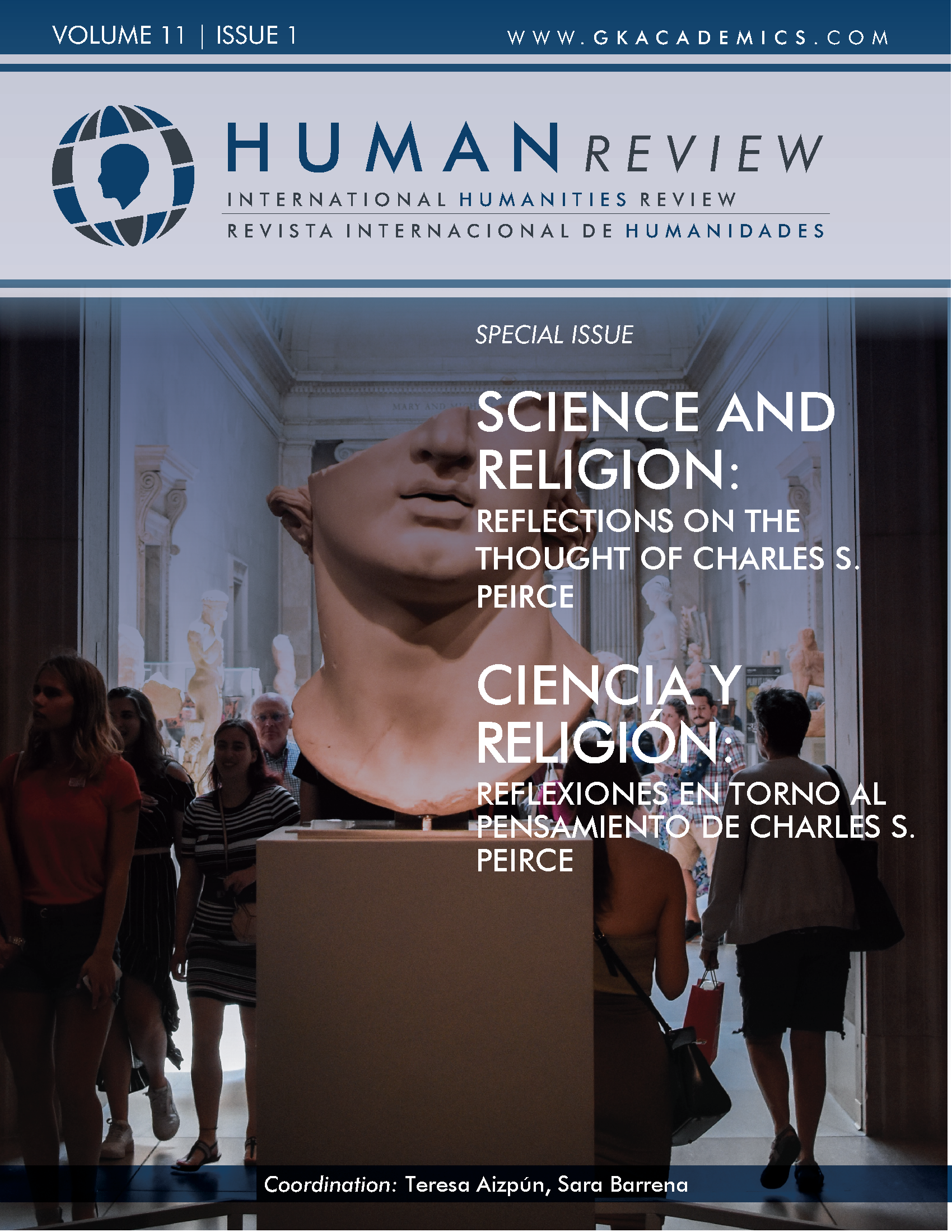‘Symbolic Power’ in the Official Covid-19 Field and Language
DOI:
https://doi.org/10.37467/gkarevhuman.v11.3080Keywords:
Covid-19, SARS-CoV-2, Symbolic power, Bourdieu, Discourse, PandemicsAbstract
The covid-19 pandemic caused countries around the globe to take measures, and to construct a specific set of language to talk about the virus. The present discussion paper aims to unpack this language based on Pierre Bourdieu’s theory of ‘symbolic power’, and social observations. The analysis indicates that the covid-19 field was formulated where an official language was produced, including scientific, war, enforcement and censorship linguistic practices. The paper discusses why there is not one covid-19 field and linguistic practice, causing a diversity of understanding the pandemic. The paper opens new directions in studies of language on public health threats.
References
Bian, Y., Miao, X., Lu, X., Ma, X., & Guo, X. (2020). The Emergence of a COVID-19 Related Social Capital: the Case of China. International Journal of Sociology, 50(5), 419-433. DOI: https://doi.org/10.1080/00207659.2020.1802141
Bird, S.E. (2003). The Audience in Everyday Life. Routledge.
Blume, C. (2020). German Teachers’ Digital Habitus and Their Pandemic Pedagogy. Postdigital Science and Education, 2(3), 879-905. DOI: https://doi.org/10.1007/s42438-020-00174-9
Bourdieu, P. (1984). Distinction: A social critique of the judgment of taste. Harvard University Press.
Bourdieu, P. (1990). The Logic of Practice. Polity. DOI: https://doi.org/10.1515/9781503621749
Bourdieu, P. (1991). Language and Symbolic Power. Polity.
Bourdieu, P. (2000). Making the Economic Habitus: Algerian Workers Revisited. Ethnography 1(1), 17–41. DOI: https://doi.org/10.1177/14661380022230624
Bowling, A. (2014). Research Methods in Health: Investigating Health and Health Services. McGraw-hill education.
Buchholz, L. (2016). What Is a Global Field? Theorizing Fields beyond the Nation-state. The Sociological Review, 64(2), 31-60. DOI: https://doi.org/10.1111/2059-7932.12001
Constantinou, C. S. (2021). Responses to Covid-19 as a form of ‘biopower’. International Review of Sociology, 1-11. https://doi.org/10.1080/03906701.2021.2000069 DOI: https://doi.org/10.1080/03906701.2021.2000069
Constantinou, C.S. (2020). “People Have to Comply with the Measures”: Covid-19 in “Risk Society." Journal of Applied Social Science, 15(1), 3-11. https://doi.org/10.1177/1936724420980374 DOI: https://doi.org/10.1177/1936724420980374
Davis, L. (2021). In the Time of Pandemic, the Deep Structure of Biopower Is Laid Bare. Critical Inquiry, 47(S2), S138-S142. DOI: https://doi.org/10.1086/711458
Fereday, J. & Muir-Cochrane, E. (2006). Demonstrating Rigor Using Thematic Analysis: A hybrid Approach of Inductive and Deductive Coding and Theme Development. International journal of qualitative methods, 5(1), 80-92. DOI: https://doi.org/10.1177/160940690600500107
Gerard, F. M. (2010). Ethnography as participant listening. Ethnography, 11(4), 558-572. DOI: https://doi.org/10.1177/1466138110372587
Giritli Nygren, K., & Olofsson, A. (2020). Managing the Covid-19 Pandemic Through Individual Responsibility: the Consequences of a World Risk Society and Enhanced Ethnopolitics. Journal of Risk Research, 22, 1-5. DOI: https://doi.org/10.1080/13669877.2020.1756382
Graham, H. (2020). Hysteresis and the Sociological Perspective in a Time of Crisis. Acta Sociológica, 63(4), 450-452. DOI: https://doi.org/10.1177/0001699320961814
Green, J., & Thorogood, N. (2018). Qualitative Methods for Health Research. SAGE.
Heffernan, C., Misturelli, F., & Thomson, K. (2011). The Representation of Highly Pathogenic Avian Influenza in the Chinese Media. Health, Risk & Society, 13(7-8), 603-620. DOI: https://doi.org/10.1080/13698575.2011.630719
Kothari, A. (2016). Signifying AIDS: How Media Use Metaphors to Define a Disease. African Journalism Studies, 37(2), 19-39. DOI: https://doi.org/10.1080/23743670.2016.1173572
Lahire, B. (2003) From the Habitus to an Individual Heritage of Dispositions. Towards a Sociology at the Level of the Individual. Poetics, 31(5-6), 329-355. DOI: https://doi.org/10.1016/j.poetic.2003.08.002
Lean, M.L. (2007). AIDS and its Associates: a Discourse Representation of the Disease. Critical approaches to discourse analysis across disciplines, 1(1), 19-35.
Lo, MC., & Hsieh, HY. (2020). The “Societalization” of Pandemic Unpreparedness: Lessons from Taiwan’s COVID Response. American journal of cultural sociology, 8(3), 384-404. DOI: https://doi.org/10.1057/s41290-020-00113-y
Luders, C. (2004). Field observation and ethnography. In U. Filck, E. Von Kardoff, & Steinke, I. (Eds.), A Companion to Qualitative Research (pp. 222-230). Sage Publications.
Mabhala, M.A., Yohannes, A., Massey, A. & Reid, J.A. (2020). Mind your Language: Discursive Practices Produce Unequal Power and Control over Infectious Disease: A Critical Discourse Analysis. International Journal of Preventive Medicine, 11, 37. DOI: https://doi.org/10.4103/ijpvm.IJPVM_431_17
Matthewman, S., & Huppatz, K. (2020) A sociology of Covid-19. Journal of Sociology, 56(4), 675-683. DOI: https://doi.org/10.1177/1440783320939416
Moodley, P., & Lesage, S. S. (2020). A discourse analysis of Ebola in South African newspapers (2014–2015). South African Journal of Psychology, 50(2), 158-169. DOI: https://doi.org/10.1177/0081246319868656
Munhall, P. (2012). Nursing Research. Jones & Bartlett Learning.
Pazzanese, C. (May 8, 2020). Battling the ‘Pandemic of Misinformation’. The Harvard Gazzete, Health and Medicine. https://news.harvard.edu/gazette/story/2020/05/social-media-used-to-spread-create-covid-19-falsehoods/
Petrikas M. (2019). Bourdieusian Concepts and the Field of Theatre Criticism. Nordic Theatre Studies, 31(1), 38-57. DOI: https://doi.org/10.7146/nts.v31i1.112999
Rocamora, A. (2002). Fields of fashion: Critical insights into Bourdieu’s sociology of culture. Journal of Consumer Culture, 2(3), 341-362. DOI: https://doi.org/10.1177/146954050200200303
Um-Lo, N. (2020). Biopower, Mediascapes, and the Politics of Fear in the Age of COVID‐19. City & Society, 32(2). DOI: https://doi.org/10.1111/ciso.12311
Wallis, P., & Nerlich, B. (2005). Disease Metaphors in New Epidemics: the UK Media Framing of the 2003 SARS Epidemic. Social science & medicine, 60(11), 2629-2639. DOI: https://doi.org/10.1016/j.socscimed.2004.11.031
Wu, C. (2020). Social Capital and COVID-19: a Multidimensional and Multilevel Approach. Chinese Sociological Review, 30, 1-28. DOI: https://doi.org/10.1080/21620555.2020.1814139
Downloads
Published
How to Cite
Issue
Section
License
Those authors who publish in this journal accept the following terms:
- Authors will keep the moral right of the work and they will transfer the commercial rights.
- After 1 year from publication, the work shall thereafter be open access online on our website, but will retain copyright.
- In the event that the authors wish to assign an Creative Commons (CC) license, they may request it by writing to publishing@eagora.org









